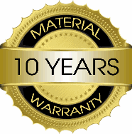FAQ’S
What is stucco?
 Stucco is applied wet and hardens to a very dense solid. It is used as a coating for walls and ceilings and for decoration. Stucco may be used to cover less visually appealing construction materials such as concrete, cinder block, or clay brick and adobe.
Stucco is applied wet and hardens to a very dense solid. It is used as a coating for walls and ceilings and for decoration. Stucco may be used to cover less visually appealing construction materials such as concrete, cinder block, or clay brick and adobe.While the service life of stucco can’t be quantified as a specific number of years, properly applied and maintained Portland cement plaster, or stucco, is as durable as any commonly used cladding material.How long does stucco last?
 It’s hard surface resists abrasion and can take a lot of physical abuse. It stands up to all sorts of climates, from cold to hot and wet to dry. Many older homes built in the early 1900s have had very little maintenance and remain in good shape today.
It’s hard surface resists abrasion and can take a lot of physical abuse. It stands up to all sorts of climates, from cold to hot and wet to dry. Many older homes built in the early 1900s have had very little maintenance and remain in good shape today.
Though stucco can last a long time, it can get dirty. How do I clean dirty stucco?
 The easiest way to fix this is to power wash the stucco. But if this does not work then the surface can be painted or re-stuccoed.
The easiest way to fix this is to power wash the stucco. But if this does not work then the surface can be painted or re-stuccoed.
Yes. Researchers from Oak Ridge National Laboratory concluded thatWill stucco save energy?
 EIFS is 84% more energy efficient than any other wall system. This means you’ll save a little money and reduce your carbon footprint.
EIFS is 84% more energy efficient than any other wall system. This means you’ll save a little money and reduce your carbon footprint.
EIFS stands for Exterior Insulation and Finish Systems. A proper EIFS consists of:What is EIFS?
A layer of foam plastic insulation (also called simply “foam”) that comes in the form of sheets 2′ x 4′. If an adhesive is used to attach the insulation, the adhesive is applied to the foam with a trowel. Most EIFS use a type of insulation called Expanded Polystyrene, also known as EPS. EPS is 1 lb. density Expanded Polystyrene, similar to, but not the same as, the white foam that coffee cups are made of (the latter foam is Extruded Polystyrene). The usual range of thickness for EIFS insulation is 3/4″ to 4″, although thicker pieces are sometimes used for decoration accents – called foam shapes.A reinforced layer that is applied onto the face of the insulation with a trowel, consisting of a fiberglass reinforcing mesh (or “mesh”) embedded in a cementite’s adhesive. The mesh has an open weave, somewhat like window screening but with opening about 1/4″ square. It is made of fiberglass and can be cut with a utility knife. The mesh is available in various weights; the “heaviness” determines the impact strength of the surface (resistance to damage by being “hit”). The standard weight is 4oz, the high-impact mesh weight goes up to 15 or 20oz. This 2-part layer is called the Base Coat.A final topcoat, or finish, which is a colored, textured paint-like material that is applied with a trowel or, very rarely, by spraying. A wide range of colors and textures are available as well as custom colors. Available textures include smooth surfaces, rough “stucco-like” textures, embedded stone chips, multi-color (granite-like mixtures,) and even brick-like treatments. This layer is called the finish. It is acquired by floating.
If an adhesive is used to attach the insulation, the adhesive is applied to the foam with a trowel. Most EIFS use a type of insulation called Expanded Polystyrene, also known as EPS. EPS is 1 lb. density Expanded Polystyrene, similar to, but not the same as, the white foam that coffee cups are made of (the latter foam is Extruded Polystyrene). The usual range of thickness for EIFS insulation is 3/4″ to 4″, although thicker pieces are sometimes used for decoration accents – called foam shapes.A reinforced layer that is applied onto the face of the insulation with a trowel, consisting of a fiberglass reinforcing mesh (or “mesh”) embedded in a cementite’s adhesive. The mesh has an open weave, somewhat like window screening but with opening about 1/4″ square. It is made of fiberglass and can be cut with a utility knife. The mesh is available in various weights; the “heaviness” determines the impact strength of the surface (resistance to damage by being “hit”). The standard weight is 4oz, the high-impact mesh weight goes up to 15 or 20oz. This 2-part layer is called the Base Coat.A final topcoat, or finish, which is a colored, textured paint-like material that is applied with a trowel or, very rarely, by spraying. A wide range of colors and textures are available as well as custom colors. Available textures include smooth surfaces, rough “stucco-like” textures, embedded stone chips, multi-color (granite-like mixtures,) and even brick-like treatments. This layer is called the finish. It is acquired by floating.
Yes. You can paint the stucco if you dislike the color Can I paint the stucco?
 or want to go for something new but if you are considering new stucco then there are a wide range of colored stucco options for you to choose from.
or want to go for something new but if you are considering new stucco then there are a wide range of colored stucco options for you to choose from.
To an extent but be careful with it. Do not play hockey against it and if power washingIs stucco impact resistive?
 make sure the pressure is not great enough to cut through the stucco (don’t worry this can’t be accomplished with your average hose).
make sure the pressure is not great enough to cut through the stucco (don’t worry this can’t be accomplished with your average hose).
Yes but it is not easy. A tent and heater system must be set up to keep the temperature up consistently.Can stucco be applied in winter?
 If this is not done properly then the stucco will freeze and crack as opposed to curing (drying). It is also harder for workers in the extremely cold Canadian days. This is why most stucco jobs are carried out in the spring and summer.
If this is not done properly then the stucco will freeze and crack as opposed to curing (drying). It is also harder for workers in the extremely cold Canadian days. This is why most stucco jobs are carried out in the spring and summer.
Can stucco be applied in the rain?
No. Attention must be given to the weather so that rain is not forecasted when stucco is being applied otherwise the rain will wash away the stucco.
is being applied otherwise the rain will wash away the stucco.
Yes. It is recommended that you keep the color code for future reference but even with the exact same color stucco dries differently under different conditions such asIs it hard to match colors with stucco?
 humidity, wind, brightness, shadow (from scaffolding) and temperature. If you do not have a color code, a small sample piece will be taken to the manufacturer for them to match. It is extremely difficult to match colors and is thus never guaranteed.
humidity, wind, brightness, shadow (from scaffolding) and temperature. If you do not have a color code, a small sample piece will be taken to the manufacturer for them to match. It is extremely difficult to match colors and is thus never guaranteed.
Yes if applied properly.Is stucco waterproof?
Yes but patch up jobs cannot be done since the freshly applied stuccoCan stucco be repaired?
 will look different then the old creating a blemish. To repair stucco either entire walls or entire sections with proper joints must be redone.
will look different then the old creating a blemish. To repair stucco either entire walls or entire sections with proper joints must be redone.
Molding
Molding is a strip of material with various cross sections used to coverWhat is molding?
 transitions between surfaces or for decoration.
transitions between surfaces or for decoration.
Is molding stuccoes or painted?
Your choice, It can be painted or stuccoes but paint is preferred since it is easier to apply on the edges and corner of moldings because of the detail. A darker or lighter tone then that used for the stucco is usually applied to give a nicer look.
on the edges and corner of moldings because of the detail. A darker or lighter tone then that used for the stucco is usually applied to give a nicer look.
Will molding’s crack?
Not from temperature changes.
Are molding’s resistant to extreme temperatures and weather elements?
Yes, they are quite durable but quality depends on the manufacturer.
Bases and Parging
What is parging?
Parge coat (concrete) is a thin coat of a cementitious or polymeric mortar applied to concrete for refinement of the surface. The typical parge coat is 1/32″-1/16″ in thickness; this may be less than the minimum thickness allowed by many mortars types.The intent is to create a contiguous surface by filling surface air voids and bugholes (eliminating bughole-induced outgassing) and to level concrete with extreme rugosity to a level suitable for top coating with a high-performance protective coating.
than the minimum thickness allowed by many mortars types.The intent is to create a contiguous surface by filling surface air voids and bugholes (eliminating bughole-induced outgassing) and to level concrete with extreme rugosity to a level suitable for top coating with a high-performance protective coating.











